Responses of Abies pinsapo carbon and water balances to drought and competition
Responses of Abies pinsapo carbon and water balances to drought and competition
We are evaluating the phenology of radial growth and carbon and water balances under different elevations and thinning intensities on Abies pinsapo, a relict Mediterranean fir species. We compute a distance dependent competition index to account for the effect of tree-to-tree competition since we propose that density-dependent factors may greatly modulate the phenological patterns of radial growth, carbon and water status of trees.
Colleagues.
Carreira, J.A., Viñegla, B., Lechuga, V.
Dept. B. Animal, B. Vegetal y Ecología, Universidad de Jaén. Campus Las Lagunillas, 23071-Jaén (Spain).
Carraro, V., Anfodillo, T.
Dipartimento Territorio e Sistemi Agro-Forestali, Università Degli Studi di Padova, Agripolis - Viale dell'Università, 16 - 35020 Legnaro (Padova, Italy).
Linares, J.C., Seco, J.I., Rodríguez-Sánchez, J., Merino, J.
Área de Ecología, Universidad Pablo de Olavide. Ctra. Utrera km. 1, 41002-Sevilla (Spain).
Thinning experiment
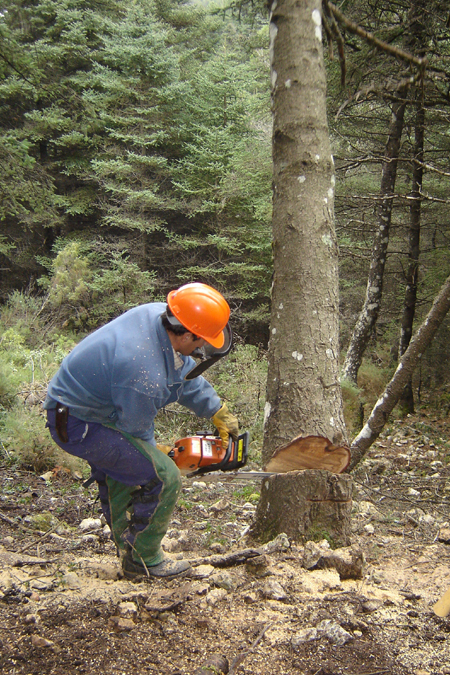
Thinning treatments were conducted during October 2004 in stands with previously comparable basal area and stand structure. Three treatments levels, each one replicated in two 1000 m2 plots, were considered: reduction of 60% of the total basal area in the plot, reduction of 30% total basal area and an unthinned control. Selection of the trees to be removed was performed considering two additional criteria: (i) to achieve a diameter class distribution after thinning as equitative as possible (this mean the most abundance size classes were preferentially felled), and (ii) to avoid that, conversely to common thinning practice, the spatial distribution of remaining trees is regular (once the number of trees to be felled in each size-class was fixed, the specific target individuals were selected by a random procedure).
Dendrometer measurements. To measure changes in tree girth, band dendrometers are mounted around the stem at ca 1.3 m in 40 trees per treatment, i.e. 20 trees per plot, randomly selected. For selected trees in the thinned plots, we registered their competition index prior to thinning, in order to check for differential responses to competition release.
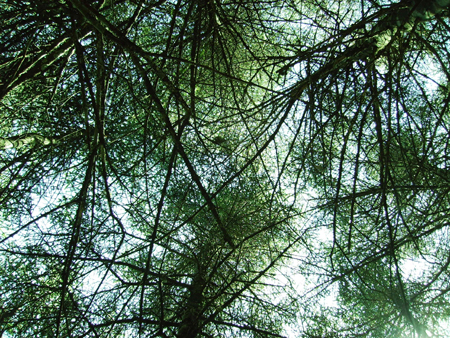
Electronic dendrometers We are also measuring stem radius variation by electronic dendrometer based on a linear positioning sensor which transforms variations of the position of its corresponding piston, which is in contact with the plant, into voltage differences captured by an electronic recorder connected to the sensor by means of three high-impedance wires. The reading of the radial variations of the tree is taken in volts; the resulting resolution is 2.44 micrometres, enabling the study of the daily variations of the plant, generated by the hydric status of same, along with the accumulated radial growth of the stem and the duration of the vegetative period. Soil water content, air temperature and relative humidity, and sap flow are also being monitoring and recording with data loggers.
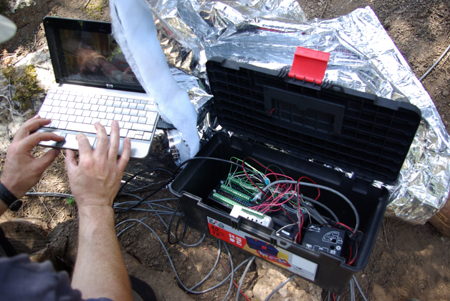
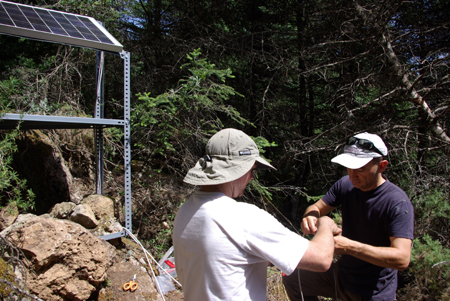
Granier sap flow system is one of the most commonly used techniques for measurements of whole-tree water use in ecophysiological and forest hydrological studies (A. Granier, Evaluation of transpiration in a Douglas-fir stand by means of sap flow measurements. Tree Physiol., 3 (1987), pp. 309-320). Sap flow density (dm3 dm- 2 h-1) is measuring in Abies pinsapo and Taxus baccata trees from contrasting elevations and stand densities with a continuously heated thermal dissipation sensor (2-cm-long needle).
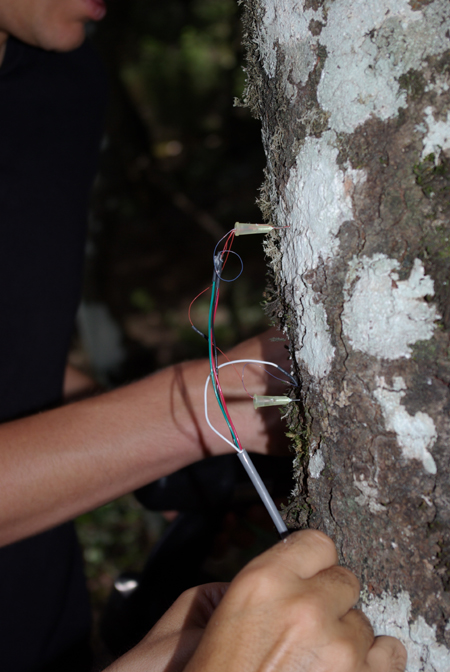
The assessment of the intra-annual variability of radial growth and sap flow under contrasting climatic conditions and competition intensities may serve to assess how plastic are radial growth and water balance in the face of increasing climatic variability. Intra-annual secondary growth and sap flow has been mainly investigated in boreal and high-altitude conifer species. By opposite, little is known about secondary growth in Mediterranean mountain conifers, which are subjected to very unpredictable climatic and water stress constrains in addition to low temperature. A precise quantification of the phenological responses of radial growth, carbon and water balance to climatic constraints will allow to evaluate how important is the inherent trees adaptive capacity for the growth and persistence of Mediterranean mountain conifers.














